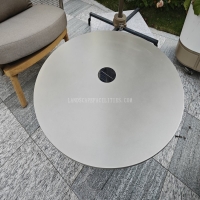Welcome to the website for landscape facilities products and knowledge.
How does the trash can's design impact its ability to be used in areas with high levels of air pollution?
In urban environments with high levels of air pollution, the design of trash cans plays a critical role in their functionality and longevity. Traditional waste bins often fail to withstand harsh conditions, leading to rapid deterioration and inefficiency. However, modern designs incorporate pollution-resistant materials like stainless steel or coated polymers, which resist corrosion and chemical damage caused by airborne pollutants.
Ventilation systems are another key feature. Proper airflow prevents the accumulation of harmful gases, reducing odors and minimizing health risks for waste handlers. Additionally, sealed lids and smart sensors can further enhance hygiene by limiting exposure to contaminated air.
Durability is equally important. Reinforced structures and anti-rust coatings ensure trash cans remain operational in polluted areas, reducing maintenance costs. By prioritizing these design elements, cities can improve waste management efficiency while safeguarding public health in high-pollution zones.
Innovations like solar-powered compactors or self-cleaning mechanisms also address pollution-related challenges, making trash cans more adaptable to extreme environments. Ultimately, thoughtful design transforms ordinary waste bins into resilient tools for combating urban pollution.
Related search:

Recommendation
Outdoor stainless steel table with solar-powered ambient lighting feature - excellent design.